
The Free Press

Over the past two years, the United States has experienced the largest crime surge in decades. Aggravated assaults went up. Shoplifting went up. Domestic violence went up. Homicides went up. In 2020, the U.S. murder rate rose 30 percent—the largest single year increase in recorded U.S. history.
Why is this happening? Is criminal justice reform the problem? Or have our attempts to mitigate crime been—as so many culturally dominant voices argue—too punitive?
We invited Lara Bazelon and Rafael A. Mangual to debate this life-and-death subject on the latest episode of Honestly and in the two essays below. — BW
A Deadly Lesson from Memphis
By Rafael A. Mangual
In the first week of September, Eliza Fletcher went for a run near the University of Memphis and never returned. The 34-year-old kindergarten teacher and mother of two was reported missing by her husband and was soon found dead. According to NBC News, security camera footage showed that she was kidnapped before she was killed. Police have since arrested and charged 38-year-old Cleotha Abston with her abduction and murder.
Abston has a lengthy criminal history, dating back to when he was a juvenile—a history that includes convictions for rape and kidnapping. In 2000, he was sentenced to 24 years in prison, and was released after serving 20 years of that sentence in 2020—four years too soon, it seems. What’s more, Abston has since been charged in yet another kidnapping and rape that police say occurred last year, not long after his release from prison. Those charges stem from the results of a rape kit that was received almost a year ago, but not processed quickly, resulting in an apparently fatal delay. Had the authorities moved faster, Abston might have been apprehended sooner, and Fletcher might still be alive.
Eliza Fletcher’s murder wasn’t the only one that happened in the city during the first week of September. Memphis police arrested and charged 19-year old Ezekiel Kelly in a shooting rampage that Kelly is alleged to have live-streamed on Facebook. Seven people were shot; four of them were killed.
Kelly, like Abston, is also no stranger to criminal justice systems. He has a violent criminal history, including charges for reckless endangerment and illegal firearm possession. Last year, Kelly pleaded a first-degree murder charge down to aggravated assault. He was given a three-year sentence but served just 11 months before being released earlier this year—once again, much too soon.
While these two cases garnered loads of justified media attention, they are sadly not unique. These crimes, and others like them, point to an uncomfortable reality that more in criminal justice reform circles would do well to confront: the fact of criminal incorrigibility. Both of these cases illustrate a profound failure of the system to recognize that some people cannot be in society, and to respond accordingly.
The problem of serious violent acts committed by repeat offenders is one at the forefront of the public’s concern about rising crime. A Bureau of Justice Statistics (BJS) study of violent felons convicted in the country’s 75 largest counties between 1990-2002 found that more than 35 percent had an active criminal justice status, such as being on parole, at the time of their offense. Other BJS analyses of recidivism among state prisoners (which hovers at about 80 percent over 10 years) have found that the average person released has between 10 and 12 prior arrests, and between 5 and 6 prior convictions.
It would be wrong, even cruel, to suggest that none of these individuals should ever be released. But much of our nation’s discourse about criminal justice reform reflects the widespread belief that our criminal justice system regularly deprives offenders of the “second chances” reformers say they deserve. The data cited above shows that most offenders are given plenty of chances. There is clearly a substantial, though unquantified, number of offenders at the right tail of that distribution whose prior criminal histories are indicative of incorrigibility.
By “incorrigible,” I don’t mean that desistance from criminal activity is impossible, but that it is so unlikely as to render decisions to release such individuals morally unjust given the risks they pose. Decisions to release such violent, serial offenders are particularly questionable when the offender in question has made it so thoroughly clear that he has no intention of playing by society’s rules.
This is a real problem—one America’s decarceration advocates frankly don’t say enough about. I believe we, as a society, need to do more to set and enforce limits with respect to how many chances a repeat offender should get before we say, “Enough.”
The 1990s saw a toughening of criminal justice policy at the local, state, and federal level, a response to a dramatic surge in crime starting in the mid-1960s. Jurisdictions around the country began passing what are often referred to as three strikes laws. These created sentencing enhancements triggered by repeated criminal conduct. Those enhancements meant that someone convicted of a third eligible offense could face a lengthy mandatory minimum sentence—up to 25 years to life in some cases. Another reform, so-called “truth in sentencing” laws, set floors on how much of a given sentence had to be served before an offender would be eligible for release.
These reforms, and many other policies that hardened the criminal justice system, helped drive what would turn out to be a sharp—and, in my opinion, defensible—increase in the number of people imprisoned in the U.S., which doubled between 1990 and 2005 to more than 1.5 million. (In 2020 that number stood at just over 1.2 million.) Even the reform-oriented Sentencing Project has reported that increased incarceration likely accounts for about 25 percent of the 1990s crime decline.
Are some people behind bars who shouldn’t be? Yes, and that’s a serious problem. A close look at the prison populations of every jurisdiction in the country would surely yield examples of wrongfully convicted (and factually innocent) defendants, inmates whose sentences constitute unjustifiable upward deviations from what is generally regarded as appropriate for their offenses, and offenders who do not constitute threats to their communities.
But I believe the bigger issue is under incarceration. That is, those who have come into contact with the criminal justice system and should be incarcerated, but aren’t.
Some respond that it would be better and more humane to invest in rehabilitation so that there are fewer incorrigible offenders. The problem with this is that it presupposes that we know how to rehabilitate criminal offenders at scale. We don’t. A recent meta-analysis of the literature on the “Effectiveness of psychological interventions in prison to reduce recidivism,” published in The Lancet, found little evidence in the form of rigorous, high-quality studies to support the suggestion that a solution to the recidivism problem is within reach. This, of course, doesn’t mean we should stop trying, but until we can figure out how to rein in recidivists (especially violent ones), prison remains our best bet.
So, what should we do? It seems to me that a “three-strikes”-type approach to repeat offending is a start. Maybe the right number of strikes isn’t three. Perhaps it’s five. What is clear, however, is that more has to be done to set and enforce stringent limits on repeated criminal offending.
Concerns for those who enter our nation’s criminal justice system, while admirable, seem to have pushed more important concerns for their past and future victims to the back burner of public debate. This is an error reform activists must correct—if not for the sake of those harmed by the incorrigible, then for the sake of their own movement. Those unwilling to acknowledge that some people must be removed from society invite exactly the sort of backlash they so often denounce.
Rafael A. Mangual is the head of research for the Manhattan Institute’s Policing and Public Safety Initiative. He is the author of Criminal (In)Justice: What the Push for Decarceration and Depolicing Gets Wrong and Who It Hurts Most.
Monster Madness
By Lara Bazelon
The rise in crime over the past few years has come alongside the reprisal of a familiar argument: That we need to crack down harder on crime because more people doing more time means more safety.
The argument makes for a great campaign slogan. It is also a disproven dead-end, says criminologist and Fordham Law Professor John Pfaff, who points to studies that have demonstrated over and over that becoming a hyper-punitive society is a really ineffective way to deter crime. Among other things, the studies show that lengthy sentences served in brutal conditions with an absence of educational or vocational opportunities leads to increased recidivism.
Other industrialized countries, all of which take a less carceral approach than the U.S., have lower rates of violent crime. But we got hooked on punishment. Today, America is the mass incarcerator-in-chief among democracies, locking up far more people than our peer nations.
Why does the “crack-down-hard-harder-hardest” message still have such an irresistible allure? Because it starts and ends with mining every awful detail of a ripped-from-the-headlines true crime story. Inevitably, this sensationalism achieves its desired effect: to stoke fear, outrage, and full-throated support for policies that condemn and punish with Procrustean crudeness and cruelty.
Here is the story in broad strokes: An individual—usually a man with dark skin—did something horrific to an innocent victim—usually an attractive white woman, an elderly person, or worst of all, a child. Rape. Kidnapping. Torture. Murder.
These are statistically rare occurrences, but you wouldn’t know it from the frenzied media coverage or its weaponization by politicians.
In this story, the offender—who committed one or more of these brutal crimes—had a lengthy history of cycling in and out of the system. But because of misguided policies put in place by naïve liberals, we are told, he was allowed to go free after serving numerous, too-short stints in prison. Let loose, this marauding psychopath then wreaked havoc that was all too foreseeable.
The most infamous of these stories is that of Willie Horton, a black man who was furloughed in Massachusetts in 1986 as a part of a state program to facilitate prisoners’ reentry into society. While on this temporary release, Horton escaped and went on a crime spree that included stabbing a white man and repeatedly raping his girlfriend. The story—and an ad featuring Horton’s menacing mugshot—saturated the airwaves during the 1988 presidential campaign. The Republican candidate, Vice President George H.W. Bush, anxious to shed his image as a wimp, used Horton’s case as a race-coded cudgel to argue that his Democratic opponent—then-Governor of Massachusetts Michael Dukakis—could not be trusted to keep decent law-abiding Americans safe.
The clear solution? More time for everyone, which hinges on the demonstrably false premise that all incarcerated people are likely to be marauding psychopaths-in-waiting. Life in prison with a choked-off path to any kind of early release. Better yet: life without the possibility of parole or death by lethal injection. Since then, variations of the Horton story have been deployed countless times and always to the same effect. Forget whether the process was fair or whether the draconian punishment is humane or the logic behind it even makes sense.
Until roughly 10 years ago, that narrative held a stranglehold over both political parties. It was a race to out-tough the other. No one was immune: Yale Law School professor James Forman Jr. won a Pulitzer Prize for Locking Up Our Own, an examination of how the black community supported harsh-on-crime laws. Three strikes and you’re out. Two strikes and you’re out. The habitual offender law in Louisiana, which is the incarceration capital of the country, metes out death-in-prison sentences for a violent conviction so long as the person has one prior nonviolent felony. Almost everyone on the receiving end of this punishment is black. That law got one of my Louisiana clients—convicted of a 90-second armed robbery in which no one was injured—a 60-year prison sentence with no parole.
What made my client a habitual offender doomed to spend his days in the fields picking crops overseen by armed guards on horseback? Selling a small quantity of drugs when he was 17. As it turns out, my client was innocent of the armed robbery, but I would have represented him if he were guilty. These ghastly sentences, handed out like Halloween candy even to teenagers, are nothing to brag about. They should make us all sick with shame.
For a short while, starting in the 2010s, it looked like we might be turning a corner. The reality that crime was falling and costs were rising—not only monetary costs but the costs inflicted by the glaring race and class inequities built into the system—led both sides to reconsider. Progressive prosecutors were elected in major cities across the United States. Criminal justice reforms were passed at the state and federal level with bipartisan support. Now with crime ticking up, we are being told it was a mistake. That it is time for more prisons. More laws named after victims. More certainty that most of the people we sent to these prisons under these victim-named laws will never get out.
Are there some people who are so dangerous they need to be incarcerated unless and until they no longer pose a danger to others? Yes. Does the system make mistakes and let dangerous people out? On occasion, yes. But more often than not, it locks away people for far longer than necessary, and to deleterious effect.
The risk of de-carceration will never be zero. But neither is the cost of over-incarceration. As this Brennan Center report found, by using criteria that separates those most likely to reoffend from the rest of those incarcerated, the U.S. could release about 40 percent of our prisoners without harming public safety.
On the one hand, there is Willie Horton. His horrific crimes were indisputable. So, too, were the crimes of those who took his place in the headlines. On the other hand, there are the not-Willie Hortons. And they are the majority of people who commit violent crimes. But with treatment, intervention, education, vocational training, mental health services, and yes, mercy, they turn their lives around. The restorative justice program, Common Justice, is one model of a victim-centered alternative to incarceration. We pay college-level tuition for each year we lock them up. We pay in the harm we do to their fatherless and motherless children. We pay for their ravaged communities. Until recently, we have refused to acknowledge the deep costs of denying second chances no matter how well-earned.
Here’s the part of the Willie Horton story that no one ever talks about: Ninety-nine percent of the incarcerated people in Massachusetts who went through the same furlough program completed it successfully.
But we don’t remember their names.
Lara Bazelon is a professor at the University of San Francisco where she directs a criminal and racial justice clinic. She is the author of Rectify: The Power of Restorative Justice After Wrongful Conviction.
If you appreciate our debates, where we bring together the country’s best minds to tackle our toughest issues, become a subscriber today:

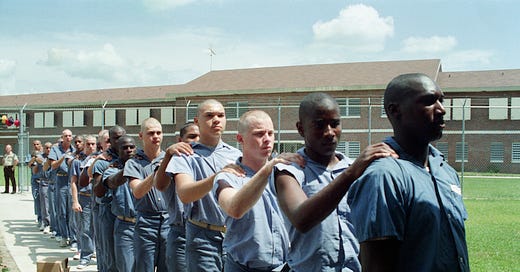

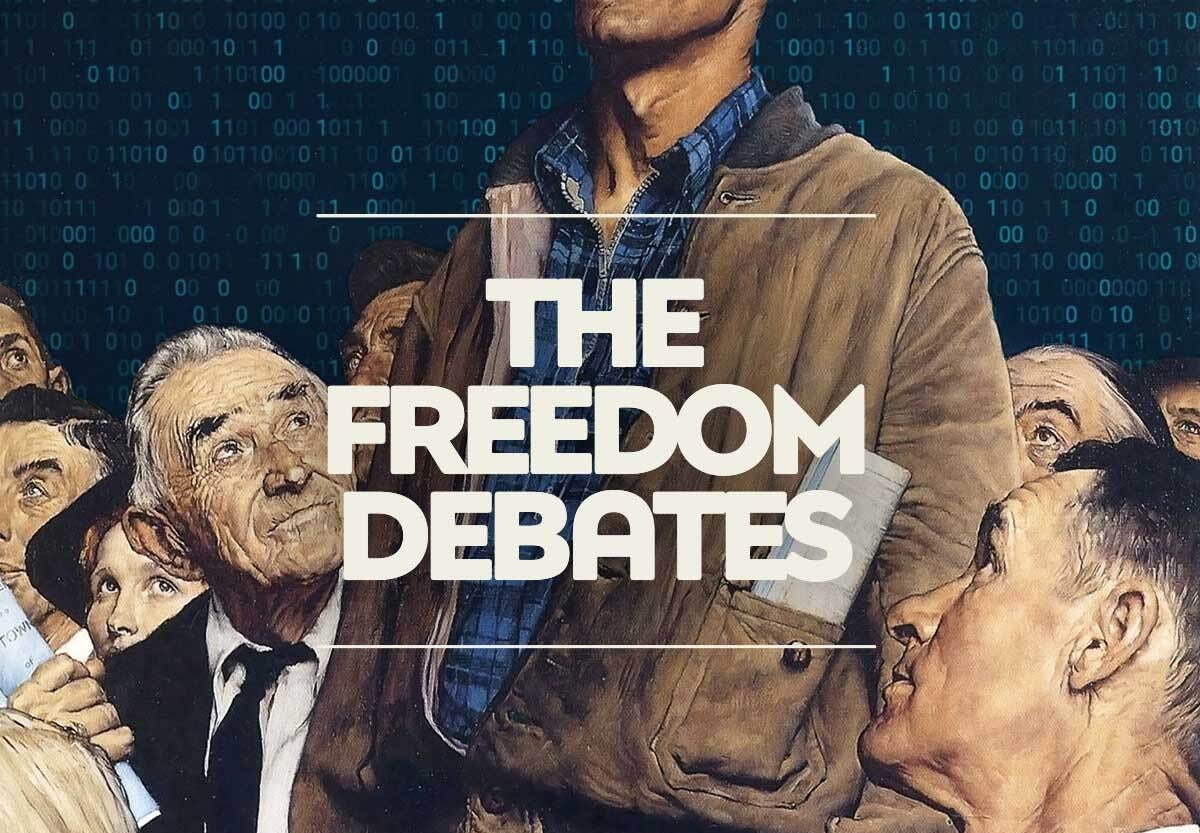

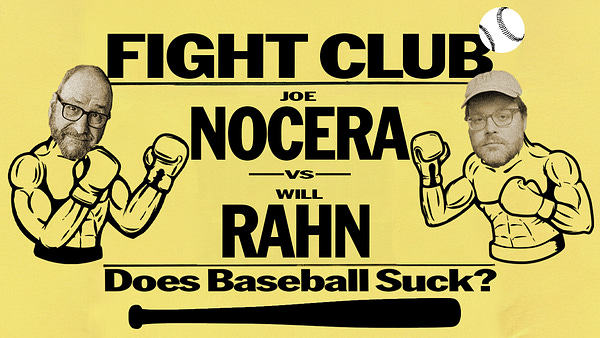

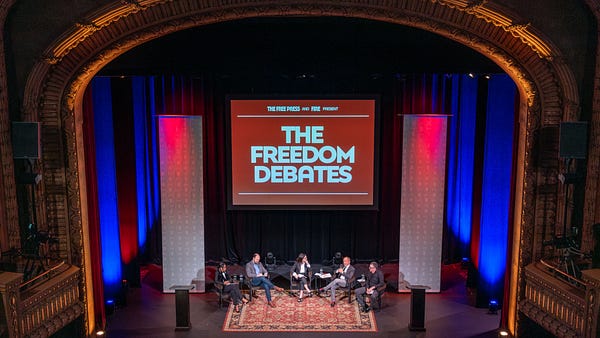



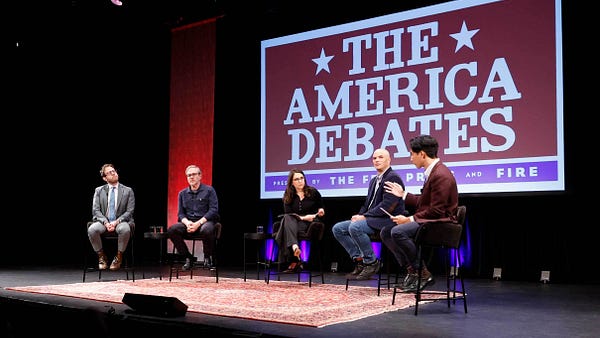

Just saw this video and thought it germane to the thread - https://www.bbc.com/news/av/stories-63506246. "Dads on Duty" in Shreveport, Louisiana, totally turned a distressed school culture around.
No one - of any color - does well, without heaping doses of love and connection.
When you add other factors, income, education, culture, etc., you just increase the predicative odds against success.
Any contemplation of judicial reform that ignores the bigger picture is missing the boat. People have a need to be safe, but when we, as a society continue to poison the environment that so many of these violent offenders marinate in, we are almost ensuring our lack of safety. (Consider the uptake in school shootings, incel culture, opiods, teen suicides triggered by vicious online behaviors.)
It's not primarily a racial issue - although racial factors compound it. It's our trashy culture that glorifies the wrong values and makes that love and connection a rare commodity, instead of every baby's birthright.
What I appreciate about these men is that they are big-hearted enough to spread some of that love around. More of this please! We all have someone in our sphere of influence who could use some encouraging. Let's step up.
Bazelon is a skillful linguist who uses words to slant the story her way while misleading readers.
Let's examine some points quickly and rebut them:
She cites a SINGLE criminologist as the basis for her assertions - what about the whole criminological community? Is there a consensus? Or sharp disagreements?
She sets up a straw man argument about the "typical" criminal, I mean poor soul, who is the grist for the media mill: "An individual—usually a man with dark skin—did something horrific to an innocent victim—usually an attractive white woman, an elderly person, or worst of all, a child." Unfortunately many criminals are persons of color. But their victims? Overwhelmingly - 90%+ -persons of color themselves.
Another straw man: "Let loose, this marauding psychopath then wreaked havoc that was all too foreseeable." Some truth to this, but no one calls these criminals "psychos" - we realize that most criminals are rational and can decide for themselves whether they will commit a crime or not.
Look at the facts: When we enforced long sentences, crime went down. Even when the demographics favored an increase in crime due to the increase in poor young men who often are criminals, crime stayed down. It was only when we got soft on crime when it started to increase.
Bazleon should be ashamed of herself but is incapable of that. Moreover, a significant number of crimes is committed by persons who, while not "pychos" as she would try to call them, still need extensive mental health treatment. But why don't they get it? Because extremists such as Bazleon closed the mental hospitals and threw the patients on the streets without care in the name of supporting their rights. And it is impossible to force them into treatment even when they clearly need it.
Fact is, it is Bazleon and her fellow travelers who have made this problem the crisis it is and then have the gall to blame racism, incarceration, and punishment the reasons for the increase in crime.